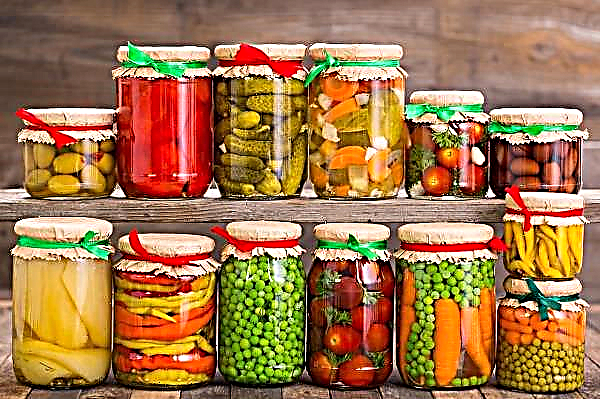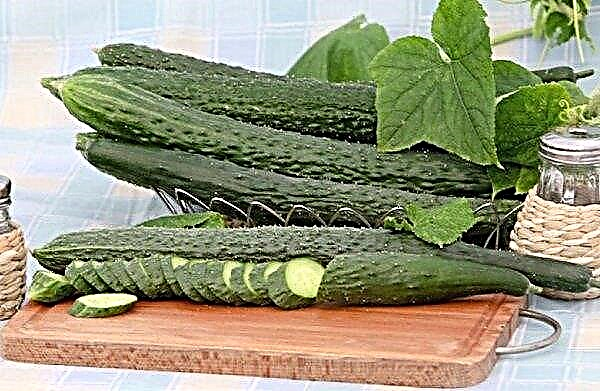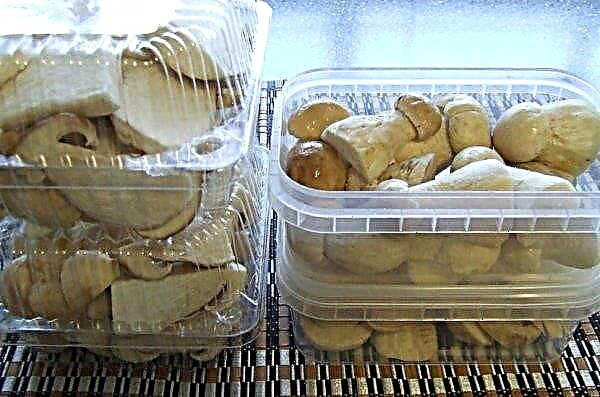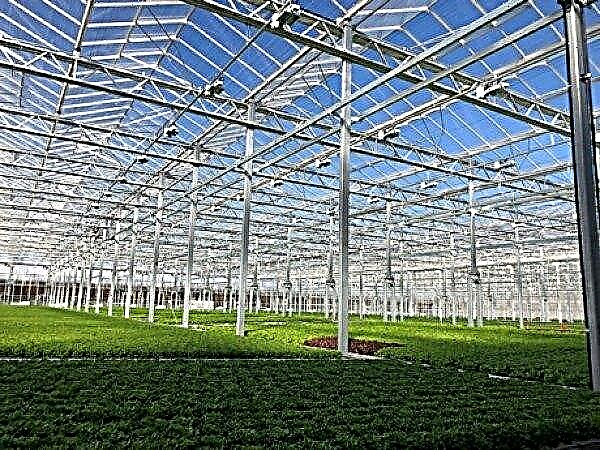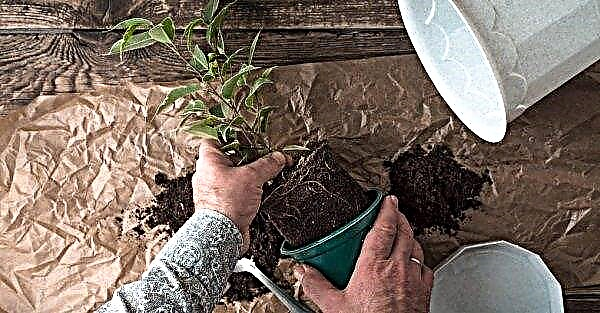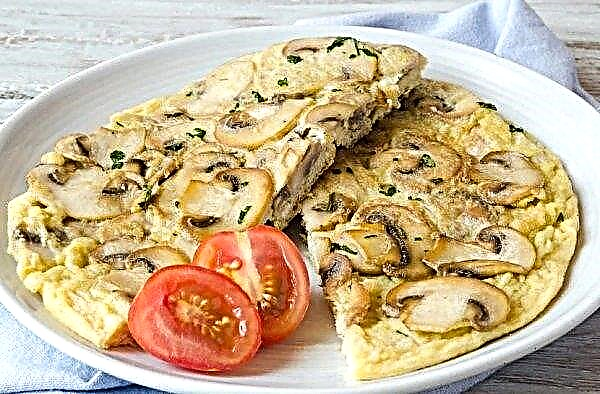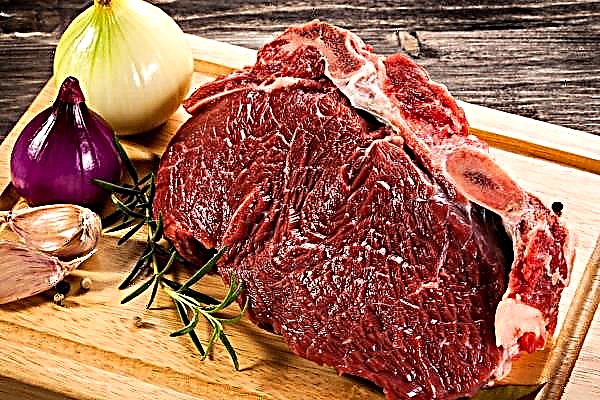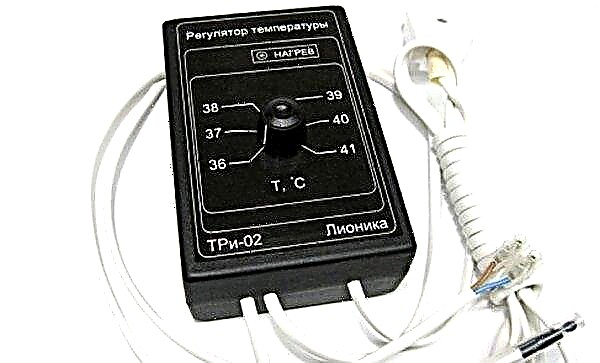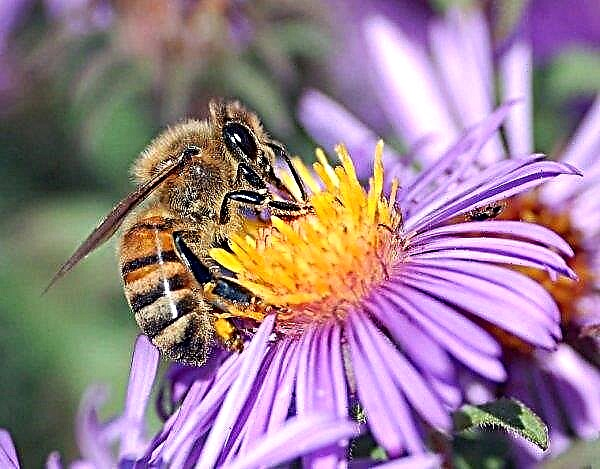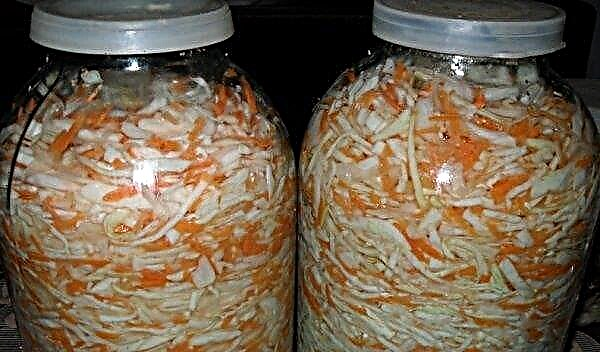Many gardeners strive to grow vegetables without the use of aggressive chemicals. Using folk remedies, you can not only feed the plants, but also fight against various diseases. The most common tomato disease is late blight, which can be quite successfully controlled with conventional iodine.
Causes and symptoms of the disease
The cause of the disease is late blight fungus, which lives both in the soil and in the organs of plants. Its detrimental effect can be seen by the appearance of dry rot of brown, lilac-brown or black color on all parts of the plant. On tomatoes are also visible:
- the border around the putrid spot is light green in color;
- white plaque from fungal spores under the leaf.
Did you know? The name "phytophthora" in translation from ancient Greek means "fatal to the plant."
Most often, late blight occurs from mid-summer under such conditions:
- high level of humidity;
- sharp fluctuations in temperature;
- cloudy and thickened landing.
 Late blight is easily tolerated from garden to garden and affects not only tomatoes, but also eggplant, peppers, apple trees and other plants.
Late blight is easily tolerated from garden to garden and affects not only tomatoes, but also eggplant, peppers, apple trees and other plants.Iodine versus late blight on tomatoes
The use of iodine in the fight against late blight allows you to effectively protect plants. However, it is necessary to take into account some possible disadvantages of this method.
Pros
- Unconditional positive features of the use of this element are:
- safety for plants and humans with the right dosage;
- increased resistance not only to late blight, but also to other infections;
- impact on all parts of the plant and soil;
- improvement of the fruit ovary.
Minuses
- In the right proportions, the mixture is safe, however, exceeding the concentration of the drug can:
- “Burn” leaves when sprayed;
- lead to deformation of the fruit.
How to prepare a solution for processing tomatoes
Some solutions include boric acid, potassium chloride or milk. A traditional recipe involves a mixture of iodine with serum.
Proportions
There are several proportions of the spray solution with different amounts of iodine. The first option includes:
- 4 l of warm water;
- 1 liter of whey or non-fat unpasteurized milk;
- 15 drops of iodine.

Another possible mixture recipe:
- 9 l of water;
- 1 liter of serum;
- 2 ml of iodine.
Important! The annual change in the composition of the solution will help to combat the adaptation of the fungus to the active element of the drug.
Step-by-step cooking instructions
To prepare a solution for spraying is not difficult. It is necessary to prepare a separate container and all the ingredients. Further actions are as follows:
- Check the water temperature, if necessary, warm up to +20 ° С.
- Add serum.
- Add iodine.
The prepared mixture must be used immediately for work.
How to process tomatoes with iodine
Processing tomatoes for protection against late blight can be performed with any type of sprayer. Necessary natural conditions are the absence of wind and rainfall. The film from the serum that holds the beneficial substances is easily washed off by rain, so it is advisable to treat the tomatoes in the dry period.
Did you know? Blight caused the Great Famine in Ireland in the middle of the XIX century, when there was a massive infection with potato fungus.
If it started raining the next day, treatment must be repeated. Spray or water the plants in the morning or in the evening, and those parts of plants that have traces of rot need to be cut off and burned. Spraying and watering is carried out with an interval of 2 weeks.
Features of the use of iodine as a fertilizer
In addition to prevention and protection against diseases, iodine also has a positive effect on tomatoes during the period of growth and fruit set. Its presence improves nitrogen metabolism, accelerates ripening and provides a large mass of fruits.
- The first top dressing is applied under the root of seedlings in the presence of two true leaves. A solution is prepared at the rate of 1 drop of iodine in 3 liters of warm water. Watered on wet soil.
- The second top dressing is needed already at the stage of ovary. To do this, 3 drops of iodine are added to 10 liters of warm water. 1 liter of solution is poured under one plant, for undersized tomatoes - 700 g each.
- The third root top dressing is recommended during fruiting.
 A concentrated ash solution is also used (3 parts of ash in 5 parts of hot water, leave for an hour, bring to a volume of 10 l) with 10 ml of iodine and 10 g of boric acid. Such a solution is infused for a day and diluted at the rate of 1 liter of fertilizer per 10 liters of water.
A concentrated ash solution is also used (3 parts of ash in 5 parts of hot water, leave for an hour, bring to a volume of 10 l) with 10 ml of iodine and 10 g of boric acid. Such a solution is infused for a day and diluted at the rate of 1 liter of fertilizer per 10 liters of water.Important! The addition of boric acid enhances the properties of the immunostimulant.
Work Precautions
The following recommendations for working with solutions should be considered:
- Processing in open ground is carried out without special protective equipment.
- In a greenhouse or other indoor environment, working with a concentrated solution requires respiratory protection due to the volatility of the drug.
- Processing is not carried out on plants planted in the soil less than 10 days ago.


